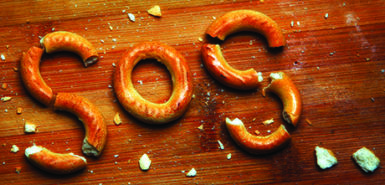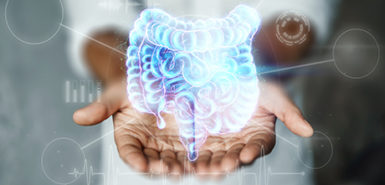
Think herbs are just for flavoring food? And hypnosis is to trick people into running around on stage, clucking like a chicken?
Guess again.
Alternative remedies for common maladies
Nausea and Vomiting
• Ginger
• Vitamin B6
• Acupuncture
• Relaxation therapyIndigestion
• Peppermint
• Caraway
• Banana
• Chili pepper extract
• Liu-Jun-Zi-Tang (Chinese herbal supplement)
• Tumeric (member of the ginger family, used in Indian and Chinese herbal medicine)
• STW 5 (supplement that includes chamomile, peppermint, caraway, licorice, lemon balm, milk thistle and more)Irritable Bowel Syndrome
• Hypnotherapy—effective in women younger than 50 and children
• Psyllium (a plant fiber)
• Peppermint oil
• STW 5
• Probiotic therapy
• Acupuncture
• Ayurvedic medicine (ancient holistic approach from India)Inflammatory Bowel Disease
• Boswellia serrata (gum resin with anti-inflammatory properties)
• Andrographis paniculata (plant extract)
• Fish oil
• Hypnotherapy
• Tumeric
These and other forms of complementary and alternative medicine techniques are gleaning successful outcomes in the treatment of gastrointestinal and liver diseases.
You won’t find this information in medical school textbooks, but complementary medicine is making waves.
About 42 percent of Americans use at least one of 16 popular non-traditional therapies, according to Michael Puff, MD, a gastroenterologist with the Spectrum Health Medical Group.
“Many (alternative) therapies can help patients when traditional medicines have not been of benefit,” Dr. Puff said. “In addition, we now have randomized control trials proving the effectiveness of some of these therapies.”
The tide has turned so much that some 600 million patient visits are made each year to alternative practitioners, according to research from the American College of Gastroenterologists.
A whopping 83 million folks are using some of the following techniques:
- Relaxation
- Herbal medicine
- Massage therapy
- Chiropractic therapy
- Dietary supplements
- Homeopathy
- Ayurveda
- Chelation/heavy metal removal
- Yoga
- Biofeedback
- Acupuncture
- Art therapy
- Lifestyle diets
- Hypnosis
- Energy healing/Reiki
- Tai chi
Dr. Puff said women are more likely than men to explore complementary alternative therapies, with the 35- to 49-year-old age group reporting the highest use.
Patients don’t appear to be locked into an either-or scenario. Almost 45 percent of complementary and alternative therapy users also take prescription medications.
However, complementary and alternative therapies are not without risk—it’s estimated that 15 million people are at risk for drug interactions.
Dr. Puff cautions people to keep in mind that some alternative medicines can produce adverse effects and some do not mix well with prescription drugs. Milk thistle, for example, can cause nausea, diarrhea, headache and impotence.
“It is important for patients to inform their doctors of their (alternative) therapy usage,” Dr. Puff said.
 /a>
/a>
 /a>
/a>
 /a>
/a>
Thank you for this article. I also find that Anise seed helps in great deal my digestive system. I normally make tea, I also add lemon, and chamomile for flavor.
I appreciated finding this article in Spectrum’s newsletter and hope this portends more blending of conventional and natural healing therapies.
Sure would be great if insurances recognized the value of alternative/complimentary medicine. More would be willing to try if they did not have to pay out of pocket or at least apply their payment to their deductible. For example, acupuncture for some chronic pain and opioids as a last resort.